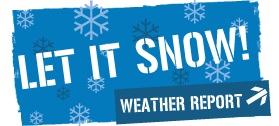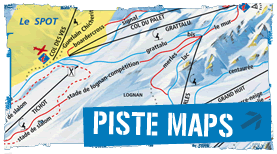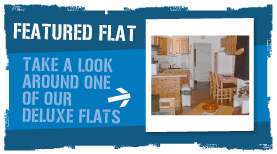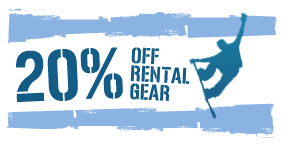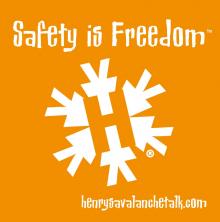Weekly report from HAT - 27/12/07
Since we last wrote there has been no new snow. But there is a sign of 10cm at the weekend and more substantial falls on Thursday next week. the snow base is still one of the best we have seen for 10 years. (see our snow depths tracking page)
Snow news
We have enjoyed Xmas skiing in glorious sunshine, especially after the wind died down on Sunday. The avalanche risk has reduced to level 2. The pistes are in fantastic shape, but for off piste the big skill has been finding the good snow, given how much of the off piste is hardened by the wind of last week. Andreas has shown some video of the kind of snow it is possible to find.
The bulletin focuses on the risks on slopes that are steep and face the sun,( these can either have internal water activity or are starting to slide on the grass as in this picture.)
Meteo France also discuss small risks on North facing slopes that are steep and shady and above 2300/2700m where there may be some weakness.
So be careful, study the bulletins (on our web logs.) and read ski diaries from Henry and Wayne Watson of Alpine Experience.
Each week in this ezine you will find an update on the snow conditions, avalanche awareness tips, weather forecasts, and a translation of the Meteo France off piste safety bulletin.
Looking forward to catching up: Future ezines will be on Wednesday evening or Thursday - next one on 2nd January.
Regards: Chris Radford - HAT ezine editor
Snow report from Henry
This past week has given us some glorious weather and some great skiing off-piste if you were willing to sniff around for it. Proof that there was some good stuff out there is on the photos and video clips on our blogs for Chamonix and Val d'Isere.. On the down side, a ski tourer was killed in an avalanche at the beginning of the week in the Hautes-Pyrénées where the snowpack conditions and the avalanche rating were similar to here in the Northern Alps - the avalanche danger rating was 2 on the international scale of 1 to 5, five being the highest.
The colder temperatures and clear skies over the last few days has led to a continued build-up of faceted (angular) grains and depth hoar. This is the granular type snow that has been nice to ski in over the last few weeks, but will be a weak layer under the next snowfall. So even if it snows just a little bit over this weekend, you need to be on the lookout for where the 'wind loading' has been taking place because this is where the danger will be lurking. 'Wind loading' is where the wind has been blowing the snow to and where the snow is accumulating in the mountains - forming wind drifts (which is another word we use in everyday language). Again, these accumulations of snow, or drifts or slabs (slabs in French), will most probably be lying on a weak layer of snow and will be unstable.
The best way to start to figure out where these unstable areas are is to read the avalanche bulletins from Météo France (see the Meteo France or our pages click here for Savoie and here for Haute Savoie), AND to look around for yourself. It is important to look around for yourself because
1. The avalanche forecast is just a forecast and not the answer to every question about snow in the mountains and
2. Sometimes snow is blown around into funny places - the result being that you can have pockets of instability in places that were not predicted.
I think if we get a bit of snow, the instability will be in places that look good to ride in. This is often the case and doesn't mean that you shouldn't go there, it just means that you need to be careful. Being careful means, for example, avoiding steeps to start the day and avoiding slopes with cliffs and narrow holes below or trees or any traps below.
Tip of the week:
Recent avalanche activity can be one of the best clues as to whether or not there is instability and often the this recent avalanche activity is confined to specific slopes where the instability is most acute.... And remember that it's the victim who sets the avalanche off themselves (or someone above).
Have Fun, Be Safe and Happy New Year to all of you! Henry
Staying safe and having more fun.
Finding the best snow off piste when it has not snowed for 10 days and the snow has suffered wind damage can be quite a challenge and the best tip may well be just to get a professional guide. Last week we discussed how you can look out for patches of good snow and by working out the slope aspect angle and altitude, you will be able to translate this into insights about where to find good snow.
The sunshine will affect slopes with different slope angle in different ways. North facing steeper slopes will have very little sun in December January and will hold the powder for longest. At present these slopes have powdery snow that is turning very grainy day by day or has been compacted by the wind. This could create a weak layer underneath the next snow fall, we are watching to see what happens here. Low angle North facing slopes tend to be wind affected and have a wind crust that is fine to ski on if you do not break through, but if you break through it can be challenging.
On the south side it is different. South facing steep slopes face the sun directly and deteriorate fast. The sun's intensity is magnified per square centimetre due to the angle of the slope and facing the sun. Lower angle south facing slopes have an angle to the sun and the sun works more slowly. (this is especially true in the morning before the sun has done its full damage.). The bulletin highlights some risks on this slopes at the moment. Interestingly some of the best powder and our video of people making powder turns was done on South east facing slopes.
West facing slopes catch the warmer afternoon rays and can deteriorate badly. See photo of recent slide in the Pays Dessert in Val d'Isere.
East facing slopes get the morning rays which will tend to be weaker and exist in lower temperatures. So east facing slopes will hold soft powdery snow for longer.
If you not have a good grasp of which is North South East and East (or even if you do) a compass can be a great help to spot which slopes face where. Given that nuances of slope aspect (10 degrees) can make a big difference, then the compass help even the most aware and experience people.
But within a single slope, there will be lots of different aspects which will produce different snow conditions across the breadth of the slope. Here the nuances of slope angle become apparent. So when you have decided to go down a slope, there can be big differences between one side and another or even in different parts of the track as you go down. Have you ever followed a good guide and then deviated from his path and as a result found yourself in much poorer snow than the others experienced. This can be true even if you are only 10m to the left or right of his track. This is due to the nuances of slope aspect.
What you can do here is to practice looking at the slope and studying how the snow conditions change as you ski through it. These observations will form the basis of your next judgement about where it is best to go.
Sunshine - slopes that face the sun may suffer snow melting even if they are above the freezing level. The sun can warm the surface of the snow. So you need to take account of this when estimating where you might find good snow. There is no magic formula for this. You may often notice your guide banging the snow on the edge of the pistes with his sticks. This will be to test the snow condition at any given altitude or aspect. By reading the conditions you find as you ski, this will help you predict where the best snow will be.
Over the past 3 weeks we have covered a lot of ground about how to find the best snow. The headline points have been.
Get some good information - recent weather patterns, advice from experts, this is essential for you to know which of the factors have been at play over the past week Know how to understand the impact of the different factors - Wind - Temperature - Slope Angle - Slope aspect - Altitude
Look at what you find as you ski and update your understanding with real evidence gathered as you ski not just using predictions based on your analysis.
It may all sound very complicated, and clearly the experts have built up considerable experience that enables them to work out where the best snow is. But in the meantime, you too can apply some of this thinking to improve your skiing experiences. Even if you begin to think through some of these points you will get yourself into better snow conditions than if you do not.


